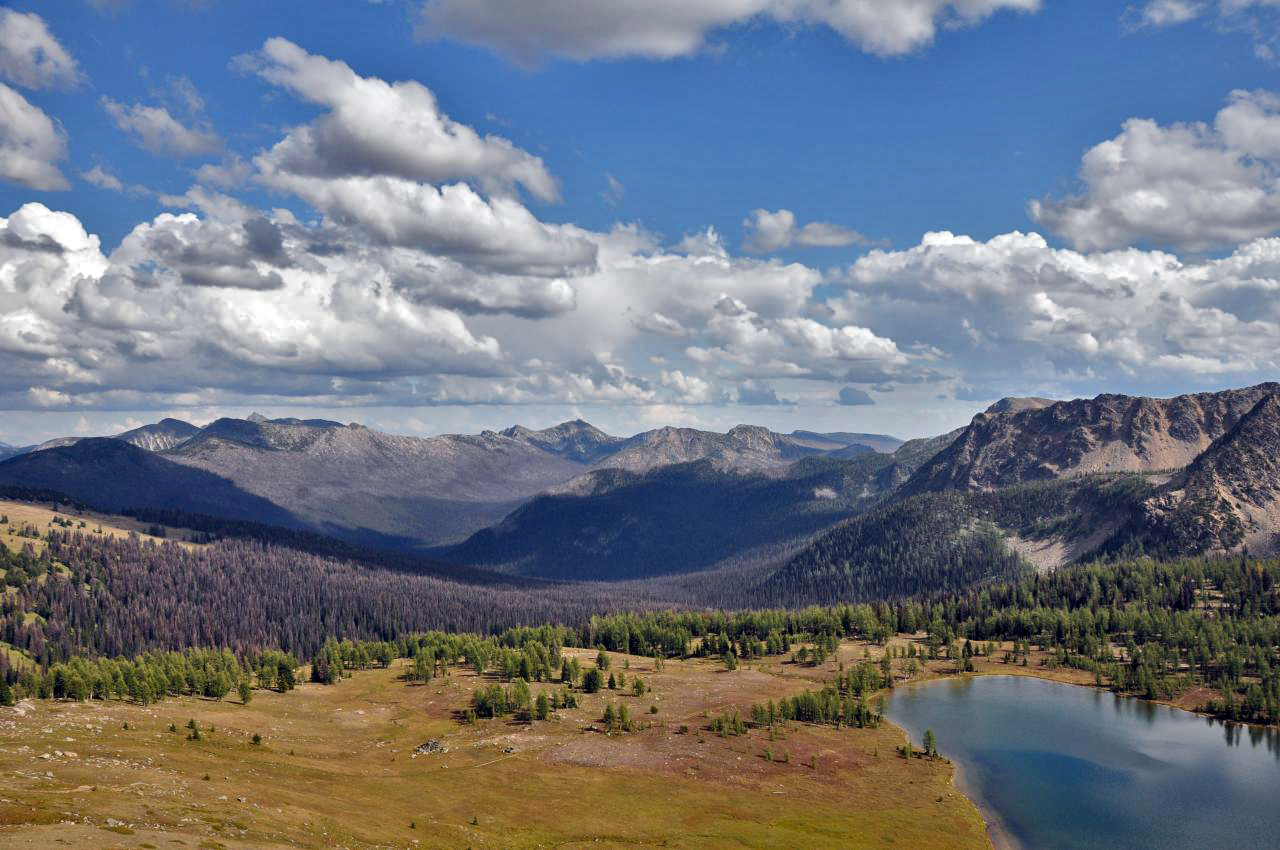|
Help protect the wild Pasayten and Lake Chelan-Sawtooth Wildernesses from commercial exploitation!
The Pasayten and Lake Chelan-Sawtooth Wildernesses east of the Cascade crest in Washington State are some of the wildest country in the lower 48 states, providing habitat for rare lynx, spotted owls, grizzlies, and wolves.
Despite evidence of damage from existing levels of pack stock use, the Forest Service is considering a drastic increase in the amount of commercial pack stock outfitting and guiding permitted there with its reissued Pack and Saddle Stock Outfitter-Guide Special Use Permit Issuance Draft Supplemental Environmental Impact Statement (SDEIS).
Wilderness Watch urges you to submit a public comment before the February 8, 2017 deadline to help protect these special places.
Background
Commercial interests exert undue influence over public land management and commercial pack stock outfits in the Pasayten and Lake Chelan-Sawtooth Wildernesses are no exception. They have resisted restrictions that are necessary to protect Wilderness, and the amount of damage they cause would land most users in front of a judge. Their political influence makes them untouchable, something almost every conscientious wilderness ranger or manager can attest to. This is why the wilderness leaders who fought to pass the Wilderness Act resisted allowing any commercial enterprise in Wilderness, and why it makes no sense to propose increasing their use.
In 2013 the Forest Service released a plan to nearly double commercial pack stock outfitting and guiding in these Wildernesses, despite ample evidence that existing use levels were causing unacceptable damage. Wilderness Watch challenged that plan and won, so the Forest Service went back to the drawing board. Unfortunately, rather than reduce use in order to protect the areas, the agency has merely tried to bolster its case for more commercial use.
Problems with the proposed plan
Currently, the outfitter camps fail to meet forest plan standards for protection of the Wildernesses. Areas denuded of vegetation at campsites exceed allowable limits, yet instead of reducing outfitter use the Forest Service is proposing to amend its forest plans to allow much larger “barren core” areas in order to accommodate excessively large stock party sizes (12 people and 18 head of stock). Additionally, the agency is proposing to allow outfitters to use existing camps closer than 200 feet from meadows, streams, lakes, and other sensitive habitats.
The proposed plan also fails to meet the Wilderness Act’s requirement that commercial services be limited to only those that are “necessary” to achieve the public purposes of Wilderness. The agency has failed to show that even the current level of use is necessary for anything other than meeting the economic interest of the outfitters, yet it is proposing to dramatically increase use. Outfitted use has averaged between 1,000-1,500 user days over the past decade, yet the plan proposes to increase this to 2,377 days, a substantial increase in use and, undoubtedly, impacts. Such a big increase is not only unnecessary, but is irresponsible considering the damage by current levels of use.
Of the Forest Service alternatives, Alternative 3 comes closest to meeting the letter and spirit of the Wilderness Act. It reduces party size to 12 “heartbeats” (a combination of people and stock not to exceed 12), and allows the least amount of commercial use, 25 percent over the past five years’ average. However, even Alternative 3 proposes to allocate more use than the average of the past several years so it will fail to restore barren areas around campsites. Rather than bring the use into compliance with the forest plan, the Forest Service proposes to amend the plan to accommodate excessive damage.
TAKE ACTION
Contact the Forest Service by February 8, 2017 to help protect these outstanding Wildernesses. The Forest Service needs to consider other alternatives that would protect the Pasayten and the Lake Chelan-Sawtooth Wildernesses from the abuses of commercial interests. In your comments, please consider urging the Forest Service to do the following:
-
Reduce party sizes from 18 head of stock to a maximum of nine (a number based on wilderness research). Adopt the 12 “heartbeat” limit for all groups;
-
Retain existing rules that keep campsites away from streams and other sensitive areas;
-
Maintain current forest plan standards for barren core areas at campsites and require outfitters to modify their operations to allow existing soil and vegetation damage to heal;
-
Reduced allocated commercial use to only that which is necessary, somewhere below the 10-year maximum of 1,500 service days.
-
Focus on protecting the wild character of these two Wildernesses rather than catering to the economic interests of a few.
Comment online: https://cara.ecosystem-management.org/Public//CommentInput?Project=3752
Or via regular mail:
Forest Supervisor
Okanagan-Wenatchee National Forest
c/o Jennifer Zbyszewski
24 Chewuch Road
Winthrop, WA 98862
Thank you for taking action! To do more, please consider making a donation today.
|


